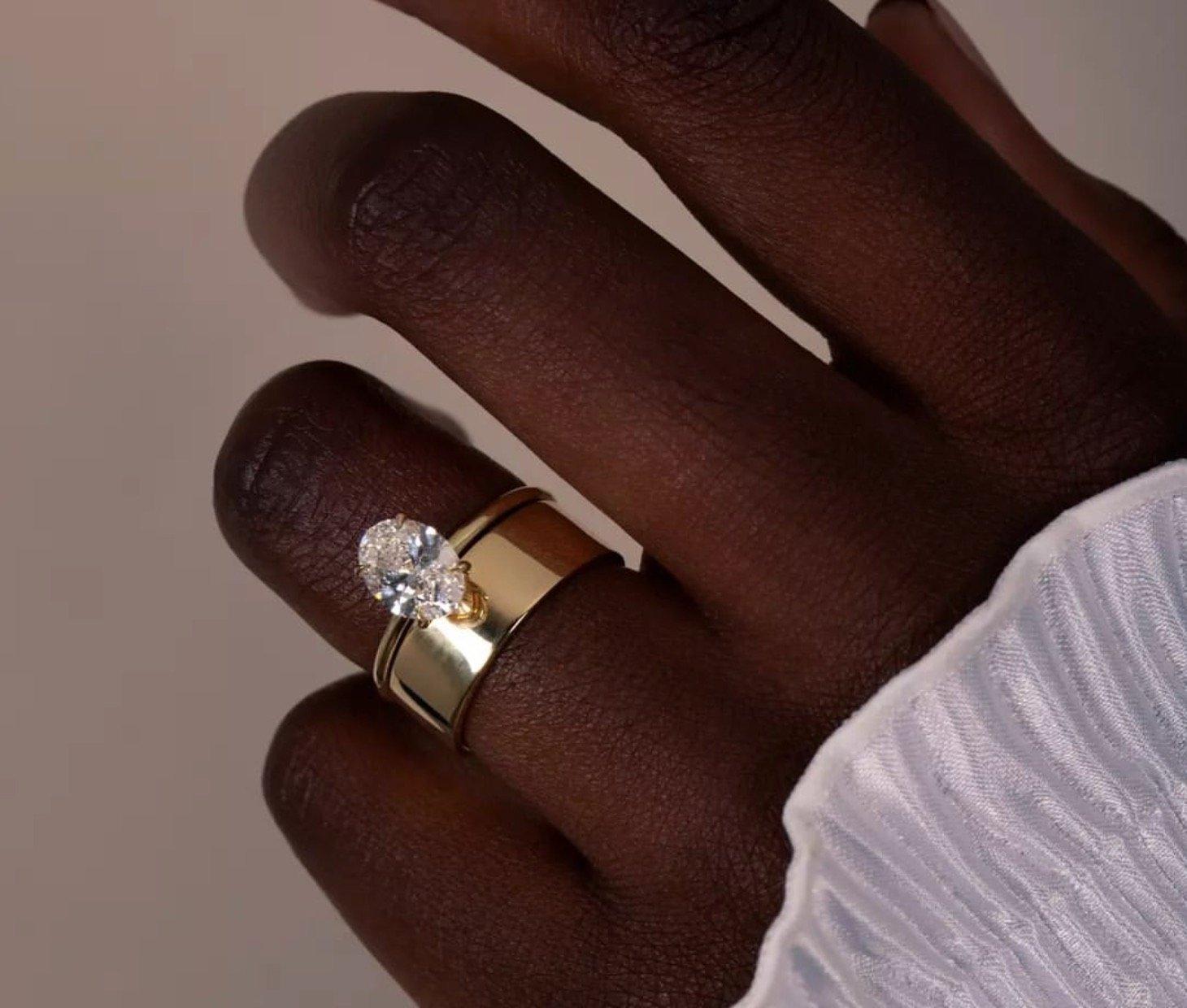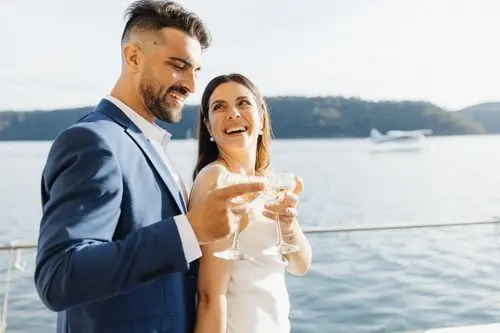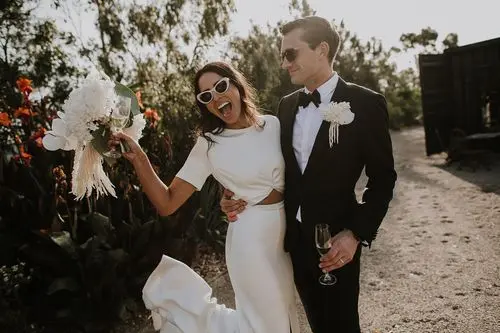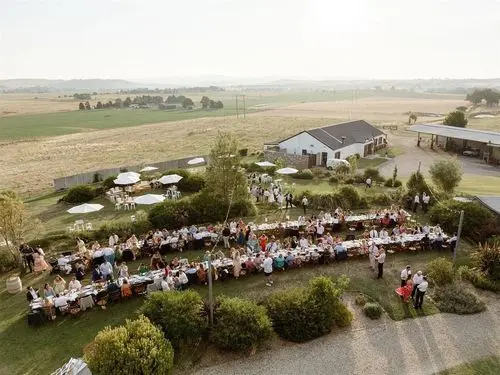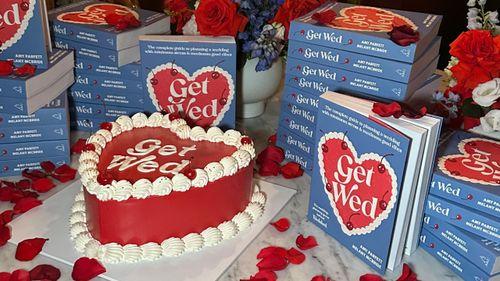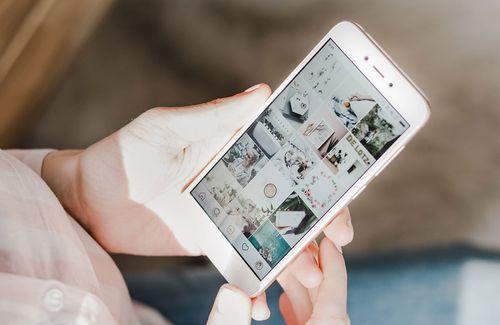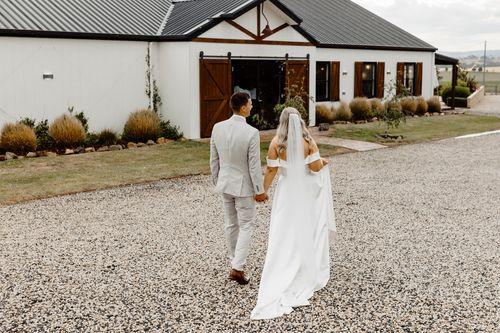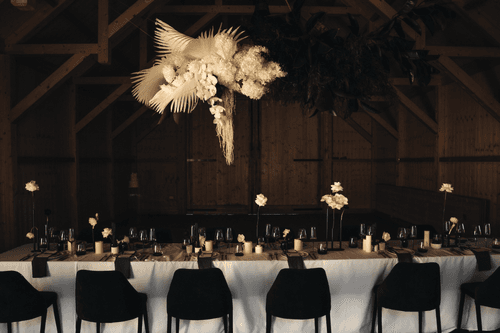Featured image: Louise Jean Jewellery.
We see you, proposers.
There’s a hot flush of excitement about what you’re about to do: ask the person you’re crazy about about to spend the rest of their lives with you.
Also, maybe there’s an uncomfortably warm prickle of anxiety over one of the pre-game moments: choosing an engagement ring.
If you’re a couple that’s planning on choosing the ring together? We see you too. You’ve got each other to bounce off during this process, but it’s still probably the first time you’ve actively gone out to source yourself an heirloom and you’re understandably keen to make sure it’s an item you love forever.
So begs the question:
How to choose an engagement ring?
The answer typically involves looking at pretty pictures of rings to see what feels fitting, research on everything to do with engagement rings and an induction into the jewellery industry and ring lingo
We’re going to help you brush up on those latter points with an honest and no-nonsense approach befitting of smart folks like yourself in 2023. Here are the key things we’re going to cover:
- Is an engagement ring right for us?
- Choosing the engagement ring: solo or together?
- How to choose an engagement ring style
- Budgeting: how much to spend on an engagement ring?
- What stone should I choose for my engagement ring?
- Mined vs. lab-grown diamonds: what’s the difference?
- What are the 4c’s of diamonds – and should you care?
- The most common engagement ring shapes
- What metal should I choose for my engagement ring?
- How to talk to engagement ring jewellers
Let’s go.
Is an engagement ring right for us?
It may feel counterintuitive to ask this question considering you’re most likely researching the topic of engagement rings with the intent on purchasing one, however consider this: does it feel right for you and your partner?
If you or your partner have openly shared a disdain for the tradition of ring-giving, this is a quick note to say that there are other ways to show your commitment to one another. You can get married without a rock on your finger.
For the vast majority of people, an engagement ring is one of the most valuable and sentimental pieces of jewellery they’ll own. Most couples will propose or be proposed to with an engagement ring. So don’t get us wrong – this question isn’t posed to make you re-evaluate your plans – if it feels right, play on! And if your partner hasn’t actively told you that they don’t want an engagement ring, then you can probably assume that they’re on board. We just want to make sure you’re not going through the motions without giving this tradition some consideration.
Choosing an engagement ring: solo or together?
OK, so you’ve established that yes: a bit of finger frosting is on the cards. The next decision to make is whether it’s a purchase that you’ll make solo (if you’re the person planning to propose) or together with your partner. And there’s a third option too – you could propose with a commitment ring in lieu of the “forever” ring. Let us break these options down.
Option 1: Solo.
Explainer: The proposer chooses a ring by themselves for their partner. This is the most traditional way to choose an engagement ring – the person who is planning on proposing researches and selects an engagement ring themselves without the help of their partner (or maybe with some hints, but it’s a mostly solo mission).
The pro here? The ultimate, romantic element of surprise when the proposal happens.
The risk? If you’re not confident that you know your partner’s style, you run the risk of choosing and investing in something they may not love. We’ve got tips on how to make sure this doesn’t happen further on.
Option 2: Together.
Explainer: You and your partner choose or design the ring together. This approach to ring-purchasing has been gathering steam – a recent survey we conducted showed that around 30% of couples pick the ring together.
Most couples entering the wedding era of their lives have been living with their partners for some time prior to an engagement happening and thus, probably have an idea that it’s on the cards. Hence, it’s not unusual that a discussion would happen around marriage before any knees were dropped. And if you’ve already talked about getting married and established you’re both on the same page, it makes sense that you could follow up with an open dialogue about engagement rings too.
The pro here? It’s not like you’re really taking the mystery away – you’ve already likely agreed that you can see a forever-kinda-future for yourselves. And it means that there’s zero disappoint when it comes to the ring as you’ve both chosen it together (so you’re bound to love it).
The risk? No real risk on the ring-choosing front but it’s just not quite as romantic as someone popping the question completely out of the blue. That said, the proposal part can still very much be a surprise in terms of when it happens. You can choose a ring… and then sit on it for weeks or months… or longer (torture) without proposing.
BONUS OPTION: A commitment ring.
Explainer: You propose with a stand-in ring that you’ll replace with an “official” engagement ring that you choose together later. It’s blending the best of both worlds: the proposal is a complete surprise but without the pressure of committing to a potentially high-value purchase if you’re nervous that the recipient might not like it.
The pro here? The proposal still comes as a surprise, there’s still a ring given (e.g. a simple band) but without splashing out on a piece of jewellery that may not be to the wearer’s taste.
The risk? Again, there’s no real risk here – it just comes down to whether you want to go in with the real deal or play it safe.
How to choose an engagement ring style
There’s understandably a fair amount of (mostly self-imposed) pressure to choose an engagement ring that’s going to be a hit, given the expectation that it’ll be worn pretty much every day of the rest of the ring-wearer’s life. So, how should you decide on the style? Here are some tips to help guide that decision.
Don’t be swayed by trends
By nature, they come and go. Sure, you can be guided by trends but only if they align with the future ring-wearer’s style. Which leads us to our next point.
Do be guided by the ring-wearer’s personal style and taste
Do they have a classic sense of style? Or is it more bold? Look at the jewellery they already wear: is it quite fine and minimal or more statement pieces? Take notice of these things. You could even share pics of your future fiancée’s favourite existing jewellery with your engagement ring jeweller to get their vibe-check on the designs you’re considering.
Also, ordinarily we wouldn’t recommend snooping on someone else’s phone but if you get a chance, suss if they have an IG folder of ringspo or a similar Pinterest board. Sounds a little too easy and obvious to nail what they want? You just never know – you could hit the jackpot.
Familiarise yourself with as many ring styles and designers as you can
Dig deeper (much deeper) than simply the first few pages of Google. Social media is helpful here, as is joining a Facebook groups for couples planning their weddings and searching the term ‘engagement ring’ in the threads. You’re guaranteed to discover a range of major and boutique jewellers that may provide further inspo for the eventual design (and might even be the one you choose to make it).
Budgeting: how much should I spend on an engagement ring?
In short, whatever you want.
Many, many decades ago, the goliath diamond company De Beers’ launched a campaign encouraging men to spend one entire month’s salary on a ring – and this jumped up to three months by the 1980s. No rhyme or reason, just clever marketing. Safe to say, salaries and the cost of living have changed at disproportionate rates over the last 40+ years (not to mention, the original recommendation was just a pie-in-the-sky number). And so have priorities, personal tastes and ring styles (not everyone wants a diamond – more on this next).
There’s no science or formula to use when budgeting for an engagement ring. It comes down to your budget and what you believe the ring-wearer will want. Here are some things to consider:
- Bigger is not necessarily better: many ring-wearers would prefer a smaller diamond (or forego for a different stone entirely)
- …but if big is important to you, talk to your jeweller about they believe will be best for your investment
- Most jewellers will be able to work with pretty much any budget and will be able to advise you on how to make the most from your money
- Vintage or second-hand rings are also popular – aside from sometimes being easier on the budget, they have the added bonus of being more environmentally friendly as you’re leaning into the circular economy
- Lab-grown diamonds are usually significantly cheaper than mined-diamonds
What stone should I choose for my engagement ring?
Diamonds are the most commonly chosen stone to use for an engagement ring. Remember that De Beers marketing campaign we mentioned earlier? You can thank it for the fact that more than 75% of engagement rings feature diamonds today, according to the Jewelry Industry Research Institute. The company went to town on the fact that diamonds have such unbreakable chemistry and are aesthetically brilliant, emblemising the ideals of marriage. Enter the slogan ‘A diamond is forever’.
But it’s entirely up to you and your partner what stone you choose. It doesn’t have to be just one stone either – you could incorporate different types of gems into the ring. Prior to the De Beers’ campaign, it was common for engagement rings to feature a different gemstone – diamonds only accounted for 10% of rings, according to the BBC. And alternative stones are back on the rise with couples today, with many choosing to substitute a diamond with a different hero stone like a sapphire, moissanite or emerald (to pull a few examples).
All this said, diamonds are still the crowd favourite. So let’s take break down the two different types of diamonds you could purchase: mined and lab-grown.
Mined vs. lab-grown diamonds: what’s the difference?
Mined diamonds (sometimes known as natural diamonds) are those created by nature, under pressure from the earth’s crust over millions and billions of years. They’re mined by hand and then cut and polished into the sparklers you see gracing the fingers, necks and ears of jewellery wearers across the world.
The 2006 film Blood Diamond shone a light on the historically unethical processes of sourcing many of the world’s diamonds, which involved child labour, dangerous working conditions, corrupt governments and rebel groups. Stricter regulation, as well as a renewed commitment from diamond manufacturers and retailers to only work with ethical suppliers has improved the situation dramatically. But there’s still a fair bit of grey area around what constitutes a ‘conflict-free’ diamond. Exploitation still happens.
In 2003, the Kimberley Process Scheme (KPS) was established to reduce “the flow of conflict diamonds – rough diamonds used to finance wars against governments.” According to Humans Rights Watch, the main problem with the KPS is the narrow definition of a conflict diamond. It merely aims to end revenue from diamonds going to rebel groups. However, it does nothing to address state-sponsored militias, corrupt governments, or the unethical treatment of people in the mining process. This means that humanitarian atrocities (slavery, torture, rape, beatings, killings) could potentially have happened in the process of mining a diamond and it can be marketed as ‘conflict-free’, as it didn’t directly fund a rebel war.
Dark and troubling, we know. So, how can you ensure that a mined diamond is ethical? It requires diligence and drilling down on the background and origin of the diamond with your jeweller. If you’re told a diamond is conflict-free due to the Kimberley Process, you can assume a grain (or more) of salt with that answer.
The truth is that diamonds that are mined out of 100% conflict-free zones with accurate tracing come at a higher cost, so make sure you do your research before you make any purchasing decisions.
Lab-grown diamonds are created in a lab artificially using machinery that’s able to mirror the highly pressurised process that turns a ‘seed’ of carbon into a diamond in the earth.
The resulting stone is identical to those you’d mine from the ground in every way, except for the fact they’re grown in a lab. They have the same chemical make-up, display the same optical properties and it’s not possible to tell the difference between the two beside the fact that they will be marked with a teensy lab symbol under a jeweller’s microscope (not visible to the naked eye).
The popularity of lab-grown diamonds is very much on the rise due to the sustainable chops around them. They have a lower greenhouse gas footprint and they’re considered a more ethical option as no communities are exploited in their creation. They’re also priced more affordably as they’re man-made and therefore less rare.
So, what’s the difference between a mined and a lab-grown diamond? Stone-wise, nothing. They’re exactly the same. Where the two diverge is in how the diamonds come to be, and the ethical and environmental impacts they have on the world at large.
What are the 4c’s of diamonds – and should you care?
The 4c’s refer to the four standards that determine a diamond’s quality: cut, colour, clarity and carat. The higher the grades for each of these C’s, the more expensive and valuable a diamond is considered to be.
Here’s a breakdown of the 4c’s:
- Cut: quality of the angles, proportions, facets, and finishing details
- Color: how colourless the diamond is
- Clarity: how clean the diamond is of inclusions and blemishes
- Carat: the weight of the diamond
Which of the 4c’s should you care about the most when choosing a diamond for your engagement ring? You should consider all of them and find a balance for your budget. For example, you could spend big bucks on a diamond of a certain carat, but if the cut and clarity is not good, then it’ll be a let-down in terms of sparkle and overall brilliance.
The Diamond Pro has a detailed read on the 4c’s and what each of them represent. In our opinion, the best approach is to find a jeweller you like, share your budget with them, choose a preferred shape of the stone and then discuss how to balance the 4c’s to end up with a ring you’re happy with.
The most common engagement ring shapes
The shape of a stone in an engagement ring is its most easily identifiable character. It comes down to personal taste (this is where getting a steer from the person who’ll be wearing the ring really comes into its own). Here’s a table that outlines the most common engagement ring shapes.
Of course, you can also opt for something more organic and irregular to suit the individuality of the wearer. The reason these particular shapes are the most popular (for diamonds, at least) is because they allow for maximum sparkle when cut correctly.
What metal should I choose for my engagement ring?
The metal you choose for the engagement ring is about more than simply the colour of the band. It’s about choosing a material that’s strong enough to safely house any stones the ring will hold. If you select a metal that’s relatively malleable like silver, there’s a risk that it will move and warp over time and any gemstones may fall out.
For this reason, platinum and gold are two of the most common metals used for engagement rings due to their durability.
Take a look at the jewellery that the ring-wearer already has – if it’s all silver, then platinum or white gold (which is silver in colour) are a good choice. If they wear mostly gold, then opt for that metal.
Here’s a breakdown of the most common metals used in engagement rings:
Platinum
It looks like silver but is the most rare (and expensive) of the precious metals. It’s also a denser and stronger metal, making it ideal for lasting the test of time. Platinum will last, unmarked, forever. Ideal to have stones like diamonds set in it. Can be resized.
Gold and white gold
Gold bands are a traditional and timeless choice. There’s the yellow gold we’re all familiar with but white gold is also a great option for those that prefer a silver look but with more durability than silver. Pure gold (24 karat) is too soft to be used for an engagement ring and will scratch and bend over time so gold tends to be combined with other alloys like silver, copper, nickel and zinc to lend strength and durability. 18K represents 75% gold, 14K is 58% gold and 10K is about 42% gold. The lower the karat, the most subtle the yellow-gold colour will be.
We’ve also broken down metals to use for wedding bands (the bands you’ll exchange on the wedding day). There are a few more options if you’re not planning on including any precious stones, which is quite typical of masculine wedding bands.
How to talk to engagement ring jewellers
Do you feel ever-so-slightly intimidated by the idea of walking blind into a jewellery store or booking an appointment at a boutique? Are you concerned that they’ll attempt to sell you something that you’re not prepared to buy or can’t afford?
You’re not alone. The good news? Jewellers or retail assistants like this aren’t common (they are out there though, so read reviews on a company before you decide to shortlist them). But to make sure you’re feeling confident and comfortable throughout the process of ring shopping, here are some conversations to have with your jeweller.
- Be upfront with your budget. Or have a few different sums in mind so you can see what your money will buy you: it’s absolutely OK to ask “what could we do for [$x] and for [$x]?”, so that you can see the difference and not be shown options that are way outside of what’s affordable for you.
- Don’t be afraid to ask questions. Lots of them. A good jeweller will take their time explaining their craft and the materials (e.g. metals and gemstones) so you understand what your money is buying you.
- Ask about the origin of their stones and metals – make sure their business and raw materials align with your own values.
- If you feel like you trust the opinion of the jeweller and would like some help deciding what will suit the ring-wearer’s hand and personal style, do feel comfortable getting their opinion. It might sound weird, zooming in on a photo of your partner’s hand on your phone, but a good jeweller will be able to recommend shapes that will flatter them.
- Get clear on the purchasing and design process. When do you put payment down? Is it broken into multiple payments? How long does it take for the ring to be made?
- Find out if they have a return or exchange policy (we’re sure the ring-wearer will adore it, but it’s worth asking if this option is available to you).
++++
Choosing an engagement ring? Sorted. If you’re ready for the next step, allow us to introduce you to:
- We Do Crew: the wedding planning subscription that will make the whole process simpler, most budget-friendly and more personal.
